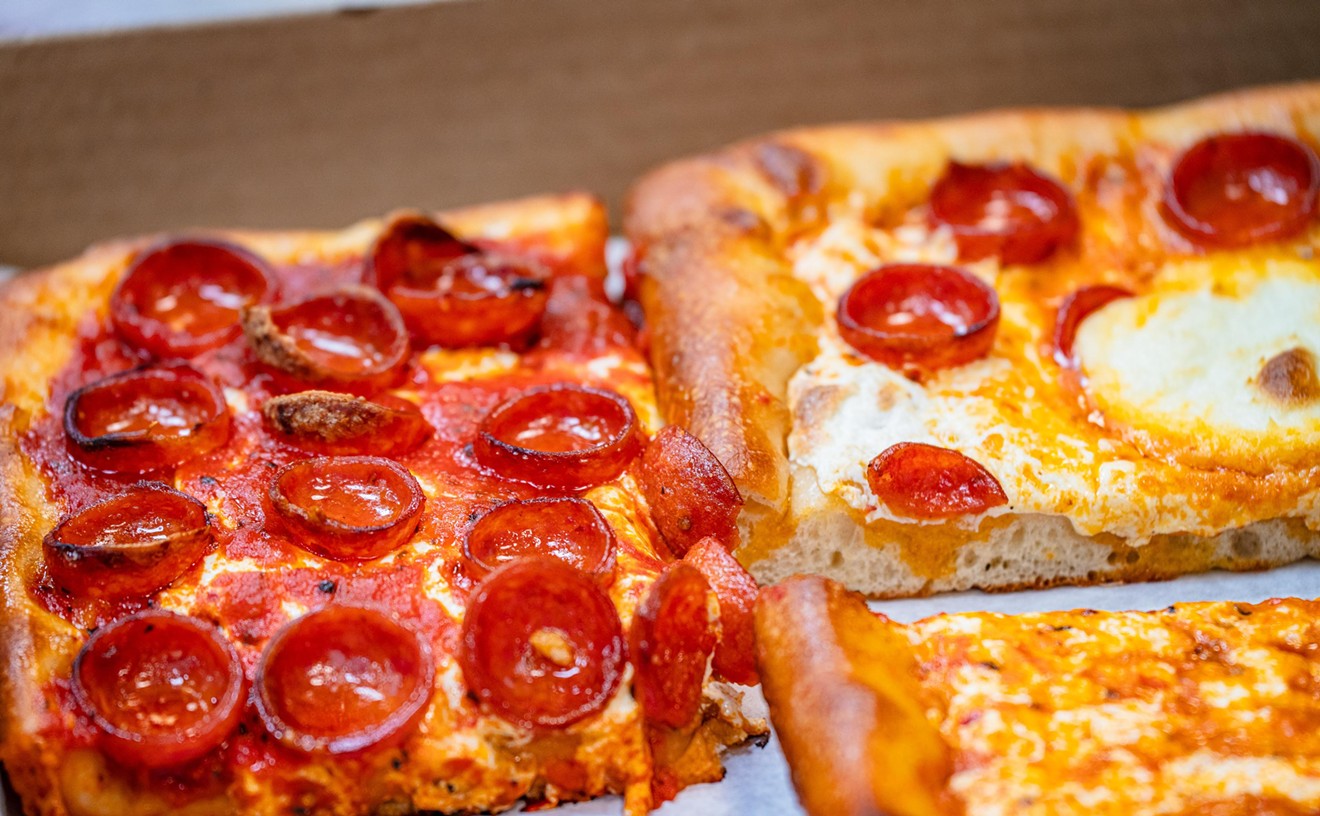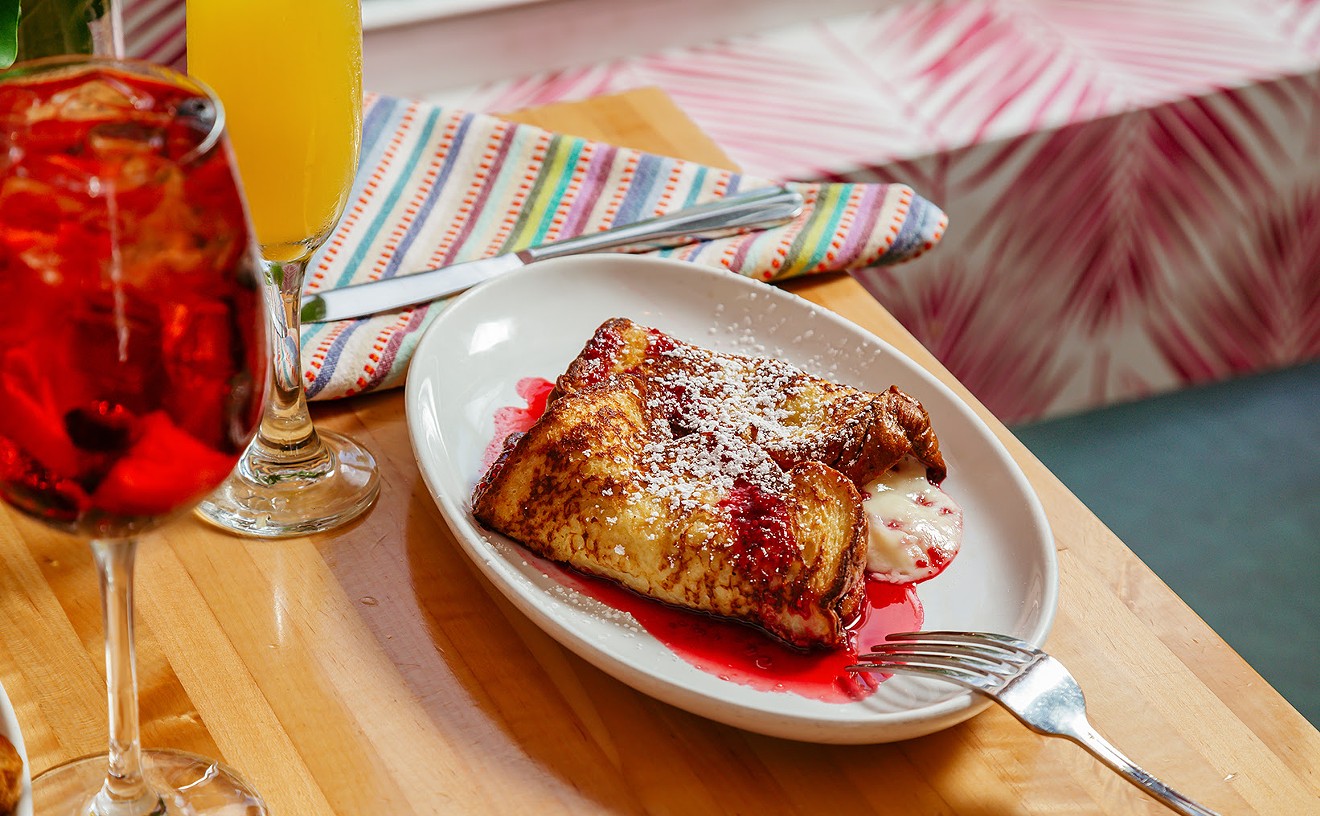Michael Pirolo has a thing for fresh pasta. The chef and partner of Macchialina Taverna Rustica was born in Jackson Heights, Queens, but moved to Mercogliano, Italy at eight months old. He headed back to the United States during junior high, and then returned to Italy when he attended the International Culinary Institute for Foreigners in Turin.
"When I went to Italy, all I wanted to do was learn to make pasta," Pirolo admits. "It took me a year and a half just to get to the pasta station at the restaurant where I worked. Other people would then want to move up and work fish, but I just didn't want to leave the pasta."
After honing his pasta-making craft in Bologna, Pirolo worked at Scott Conant's Scarpetta in New York and Miami Beach. He later joined the Pubbelly team with the launch of Macchialina.
At the Alton Road eatery, all of the pastas are "fatta in casa" -- as in, homemade. "I love dried pasta, too. But the cooking times for fresh pasta are just a lot quicker. And I refuse to pre-cook pasta," he says.
Whereas dried pasta can take anywhere from 8 to 15 minutes to cook, fresh pasta can usually be cooked in less than three minutes.
But dried pasta should not be looked upon as inferior to fresh pasta. They are just different. Dried pasta is composed of flour (typically semolina) and water, and fresh pasta is made with flour and eggs. This results in two different consistencies. While dried pasta is prized for a chewier al dente bite, fresh pasta (when made with soft-wheat flour) is known for a more delicate and less firm texture.
The types of fresh pasta also vary through out Italian regions, although Emilia-Romagna is the birthplace for many famous varieties: tagliatelle, tortellini, tortelloni and lasagne. "The south of Italy has a lot more dry pastas, while northern regions, like in Bologna, are known more for their filled and fresh pastas," Pirolo explains.
At Macchialina, pastas are handmade without an extruder. They are also cut and folded by hand. That's because making fresh pasta is more about technique than it is about quantity of ingredients. It's difficult to know exactly how much flour each recipe will need until the dough is actually being mixed. The quantity of flour depends greatly on the humidity and even the absorption capability of the egg.
"Humidity makes a big difference. If the dough doesn't come together, you could add small drops of water. If it's too wet, sprinkle a little flour," he says.
Pirolo uses a basic recipe of 3 cups "00" flour, 1/2 cup semolina flour, 3 whole eggs, 1 egg yolk, a pinch of salt and a drizzle of extra virgin olive oil.
To begin, pour the flour onto a clean, flat surface and shape it into a mound. Create a hollow in the center and add the eggs, salt and olive oil. Beat the eggs lightly and slowly bring in flour from the edges of the mound. Work the mixture until it resembles a smooth mass. If necessary, and the dough is sticky, sprinkle in more flour. Knead the pasta by hand until the dough is shiny and you've been kneading for about 6 - 8 minutes.
At Macchialina, the dough is allowed to rest overnight. But it is important to wrap the pasta very carefully. "It takes ten minutes to unwrap the pasta the next day, so it doesn't get dry," he explains.
At home, the pasta should rest, well-covered, for at least 20 minutes. Then, shape the pasta either by hand (rolling pin and knife) or with a pasta machine.
After the pasta has been shaped, cook in plenty of boiling water with salt until the pasta is tender, but still slightly firm. Coat lightly with a fresh homemade sauce, and then take a bite to understand exactly what all the fuss was about.
Worth the effort, right?
Follow Emily on Twitter @EmilyCodik.
Follow Short Order on Facebook and on Twitter @Short_Order.









